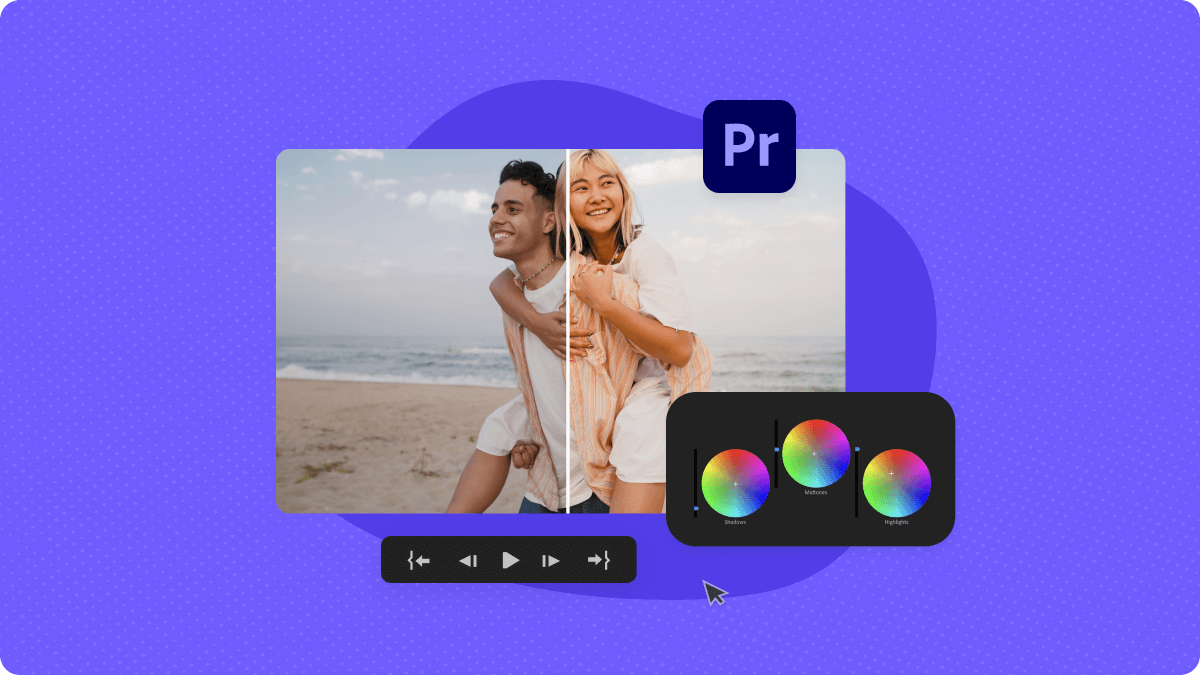10 Tips For Creating Stock Video Customers Want

Here at Envato, our approach is to build a video library that stands out and offers content that customers want. There is a focus on quality with a definite shift towards more natural, authentic-looking content.
For those reasons, if you receive a rejection on your stock footage that doesn’t automatically mean that the video is bad or even that it has no commercial utility, just simply that it’s not in line with our library requirements.
To help you to submit your best quality items and avoid rejections, we’ve put together 10 tips for creating stock footage customers want.
1. Framing & Composition
We’re looking to fill our library with videos that have high-quality, cinematic visuals with strong composition, lighting, subject matter, and depth of field.
Achieving great composition is an art in itself and is hugely important for video production as it plays a role in storytelling.
To achieve this make sure to keep the composition well-balanced and separate the main elements of your video from the secondary ones. We will not accept out-of-frame action or ignoring the edges of the frame.
Improve the framing and composition of your footage by following the tips in this video from our Review Team.
2. Movement
Your video footage needs to contain movement in some form, otherwise, it could be confused for a photograph and therefore would be better suited to live in Envato’s Photos library instead.
By including in-frame action or camera movement in your footage, you’re increasing the commercial value of that item for your customers.
To achieve this you can use techniques such as pans, tilts, dollies, and tracks to add movement, but avoid shots containing zooming in or out on static subjects as they will be rejected.
We expect to see motion or movement in one of the following forms for all submissions:
- A static camera capturing the motion of moving subjects within a scene
- A moving camera capturing a scene with very static subjects
- A moving camera capturing moving subjects within a scene
3. Stability
As mentioned above, we advocate for camera movement in all shots, including those that contain subjects in motion. However, strong camera movement requires skill and precision, so avoid shooting handheld as much as possible. Be sure to keep the subject well-framed and stable, minimizing camera shake or sudden shifts whenever possible.
A tripod will help when filming moving shots as well as using a gimbal, a dolly, or stabilizers.
Watch the video below to learn about how including dynamic shots in your footage can increase the commercial utility of your content for customers.
4. Trademark & legal requirements
Your video must fit within the guidelines of our legal terms. We can’t accept items with trademarks, so make sure to avoid logos and IP images.
Find out about trademark acceptability and our IP policy for video footage submission in this short video from the Envato Review team.
5. Commercial Utility
It’s important to make sure that your items on Envato appeal to a large audience. You can achieve this by ensuring that your footage is authentic.
In fact, authenticity is one thing that customers want most in video footage. It’s more relatable when videos feel genuine and natural rather than staged. That said, it’s not so easy to capture…
To make your video appear authentic, avoid camera interaction, over-posed, staged or cliche subject matter, unnatural or forced facial expressions, noticeably artificial lighting, or scenes and scenarios that you wouldn’t really expect to find in daily life.
Most importantly authentic shots need to feel like the footage was spontaneous (i.e. not staged) even if, most of the time, it was. It shouldn’t feel like the scene was planned to perfection, but that it was simply captured at the perfect timing.
Facial expressions can make or break a video’s authenticity, and anything that feels forced or unnatural is unlikely to sell. More and more customers are looking for footage that features real, believable people, that are true to the subject matter and scenario, rather than the traditional model look you might expect.
6. Lighting & Exposure
Make sure that the lighting in your footage looks as natural as possible as this mimics the reality we live in and allows customers to better connect with the video. You can use artificial lighting in your footage but attempt to make the light appear as natural as possible.
Shooting with natural light often requires careful planning for the time of day/conditions to get the best results, but trust us, it’s worth it.
Watch the video below, to learn more about lighting and exposure.
7. Noise & Image Detail
Nowadays it’s not uncommon to find photo and video cameras that allow you to capture still or moving images in super low light conditions. One of the biggest disadvantages of this is that the footage usually comes out with a grainy texture –called noise– which is difficult to correct during editing.
Keep your camera’s low light settings, like the ISO sensitivity, to a minimum to avoid forcing your shot’s exposure, this way you’ll maintain optimum detail in your footage. If you already have noisy footage, you can try to correct it by applying a denoise effect in your editing software.
8. Overprocessing
It can be a lot of fun exploring and experimenting with video effects, that said, it can often limit how your video can be used. It’s easy for customers to add effects if they want to but removing them is often impossible.
Create footage with natural colors so that your customers have the freedom to modify what they purchase to best fit the look and feel of their own projects.
It’s important to think about the other ways that your footage might be used by a customer. Maybe they’ll want to edit, manipulate or add other visual elements to it. If your item is overprocessed this could potentially limit the changes customers can make on their own.
While we accept some level of color grading and adjustment, it’s important not to overdo it and to keep your footage as close to the original source as possible. Remember, the more natural your video looks the better.
9. Saturation & Competition
It’s a competitive world out there, so make sure your footage stands out from the crowd. When choosing what videos to shoot and submit, make sure that you’ve checked out the competition first.
Do your research. Take a look at your competitor’s work on VideoHive or Elements before shooting your content to see what types of videos are in low supply. You can also read our Item Opportunities article to find out what trends are in high demand and low supply.
10. Video Shoots
Collections of footage are becoming more popular with customers, but keep in mind that when shooting a collection it’s important that the footage is consistent and works well together.
Customers want to be able to find items quickly, so creating sets can help them do this. The ability for customers to choose from a variety of footage from the same shoot is an easy way to provide them with the consistency and flexibility they need.
Before uploading your footage, we suggested choosing shots that offer variety, like a different emotion, pose, props, setting, perspective, and/or time of day. Avoid submitting variations of the same video that have been flipped, cropped, or processed differently or multiple takes of the same activity. Submitting footage or variations that are too similar will be considered spamming, and you could have your videos, upload rights, or account suspended.
Other things to be mindful of:
While there’s a need for all types of footage, there are still some areas and aspects that tend to be more popular.
- Footage on the subjects of technology, corporate, business, family, lifestyle, fashion, architecture, nature & travel, education, health & medical, and food.
- Footage that conveys a particular concept or mood.
- Footage with people.
While these might have greater demand, they also tend to have greater existing supply and competition. Keep that in mind and always make sure you bring something unique with your footage.
The stock industry is generally very competitive. It’s important to bring your unique perspective to the work you submit and always try to ensure your footage can stand out from the crowd.
Title, Tags and Metadata
For customers to find your videos, it’s important to tag and title your items correctly when uploading your items.
Need more help? Check out our guide in the help center, which includes heaps more examples.
If you have any questions or want to continue the conversation, jump over to the forums and connect with your fellow Author community.






